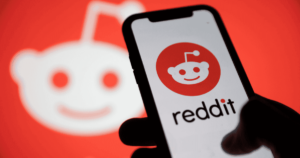Reinventing Social Interaction through Ephemeral Messaging and Augmented Reality
Snapchat, launched in 2011 by Evan Spiegel, Bobby Murphy, and Reggie Brown, has become a trailblazer in the realm of social media with its unique approach to messaging and storytelling. Known for its ephemeral content, interactive features, and innovative use of augmented reality, Snapchat has captured the attention of users, particularly the younger demographic. This article explores the evolution, distinctive features, cultural impact, and challenges of Snapchat, a platform that has redefined the way we communicate and share moments.
Snapchat’s journey began with the release of its first version in 2011, introducing the concept of disappearing photos and videos. The app’s ephemeral nature differentiated it from other messaging platforms, fostering a sense of immediacy and authenticity in communication. The iconic ghost logo and the platform’s name, a play on the idea of “snapping” moments, reflected its focus on capturing and sharing fleeting experiences.
Snapchat’s hallmark feature is its ephemeral messaging system. Users can send photos and videos, known as “Snaps,” that disappear after being viewed, creating a sense of urgency and privacy. This design choice encourages more candid and unfiltered communication compared to traditional social media platforms.
In 2013, Snapchat introduced Stories, a feature allowing users to compile Snaps into a chronological narrative accessible to their friends for 24 hours. Stories transformed Snapchat into a dynamic platform for sharing real-time experiences, from everyday moments to special events, contributing to a more authentic and in-the-moment social interaction.
Snapchat’s innovative use of augmented reality (AR) has set it apart from other platforms. The introduction of Lenses in 2015 marked a significant milestone. Lenses are interactive filters and effects that users can apply to their faces or the environment around them. This AR feature, often accompanied by sound effects, animations, or background changes, quickly became a cultural phenomenon, driving engagement and creativity on the platform.
In 2016, Snapchat expanded beyond the app itself with the launch of Spectacles.
In 2016, Snapchat expanded beyond the app itself with the launch of Spectacles. These camera-equipped sunglasses allowed users to capture Snaps from their perspective, providing a hands-free and immersive way to share moments. While Spectacles had a limited release, they exemplified Snapchat’s exploration of hardware as a means of extending its unique approach to content creation and sharing.
Snapchat’s Discover feature, introduced in 2015, brought a curated feed of content from publishers, media outlets, and creators to the platform. Discover provides users with a diverse range of articles, videos, and stories, creating a space for both user-generated and professionally curated content. This collaborative approach with publishers has added depth to the platform, making it a hub for entertainment, news, and lifestyle content.
Snapchat’s Snap Map, introduced in 2017, enables users to share their location with friends and view Snaps from specific locations around the world. While privacy concerns were raised, Snap Map has become a tool for discovering events, exploring different cultures, and staying connected with friends in a more visual and spatial way.
Snapchat has significantly influenced the way users communicate and express themselves digitally. The platform’s emphasis on impermanence has led to more spontaneous and genuine interactions. Additionally, the creative tools, such as drawing, emojis, and filters, empower users to transform ordinary moments into visually engaging and entertaining content.
Snapchat’s cultural impact extends to language and social norms. Concepts like “Snapstreaks” (sending Snaps for consecutive days) and Bitmoji, personalized avatars that users can integrate into their Snaps, have become integral parts of the Snapchat lexicon. The platform has also played a role in popularizing vertical video formats and short-form, engaging content.
While Snapchat has maintained a dedicated user base, it has faced challenges in a competitive social media landscape. Instagram’s introduction of Stories in 2016, clearly inspired by Snapchat’s Stories feature, posed a significant challenge to Snapchat’s user acquisition and engagement. The platform’s response has been to continuously innovate and introduce new features, such as Spotlight for user-generated content and original shows within the app.
Snapchat has strategically incorporated advertisements and sponsored content to generate revenue. Advertisers can create engaging ads through Snap Ads, sponsored Lenses, and sponsored Geofilters. The platform’s innovative advertising formats, combined with its engaged user base, have attracted brands looking to connect with a younger demographic.
Snapchat’s journey from a simple ephemeral messaging app to a multimedia platform with augmented reality and diverse content offerings exemplifies its adaptability and commitment to innovation. Its impact on digital communication, storytelling, and creativity is evident in the cultural shifts it has influenced. While challenges persist in a competitive landscape, Snapchat’s unique features, commitment to creativity, and exploration of augmented reality continue to position it as a distinctive player in the ever-evolving world of social media.



